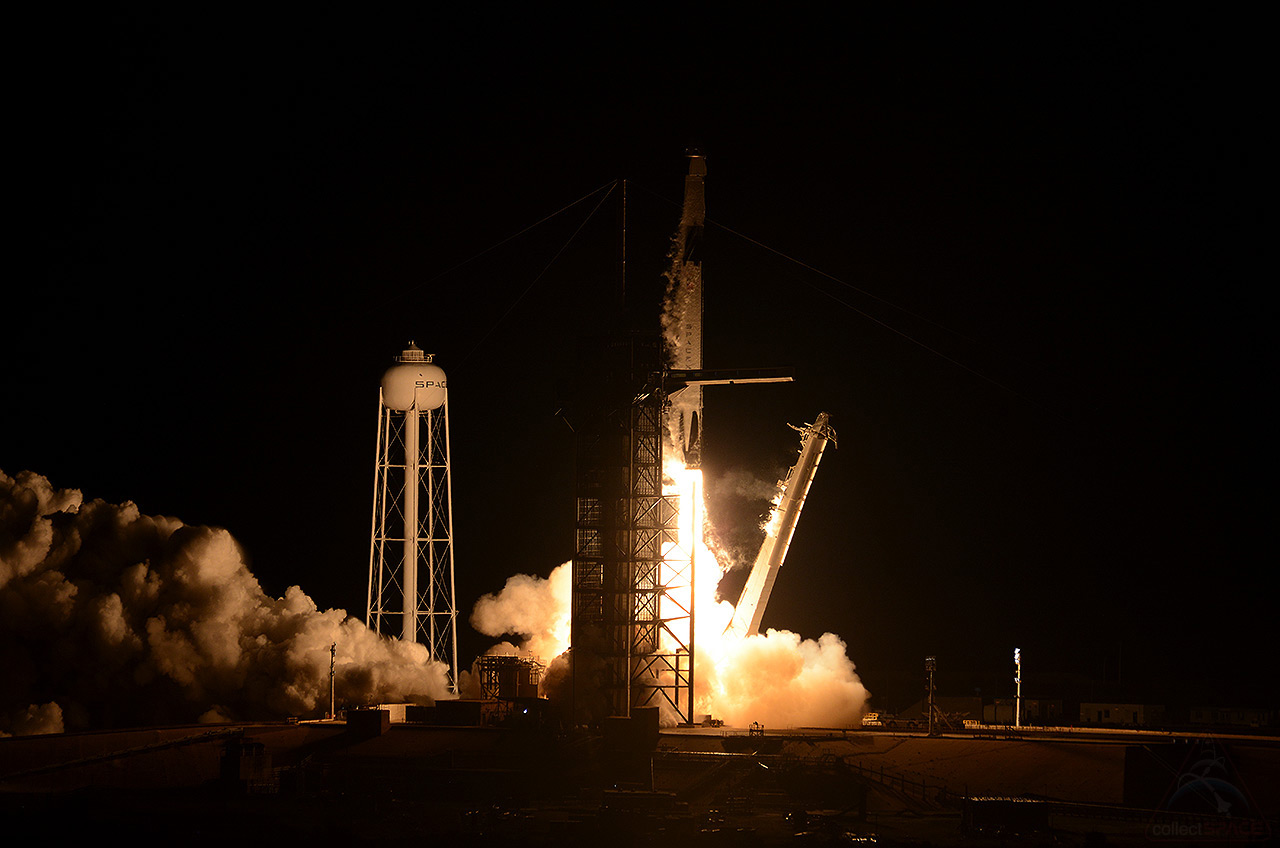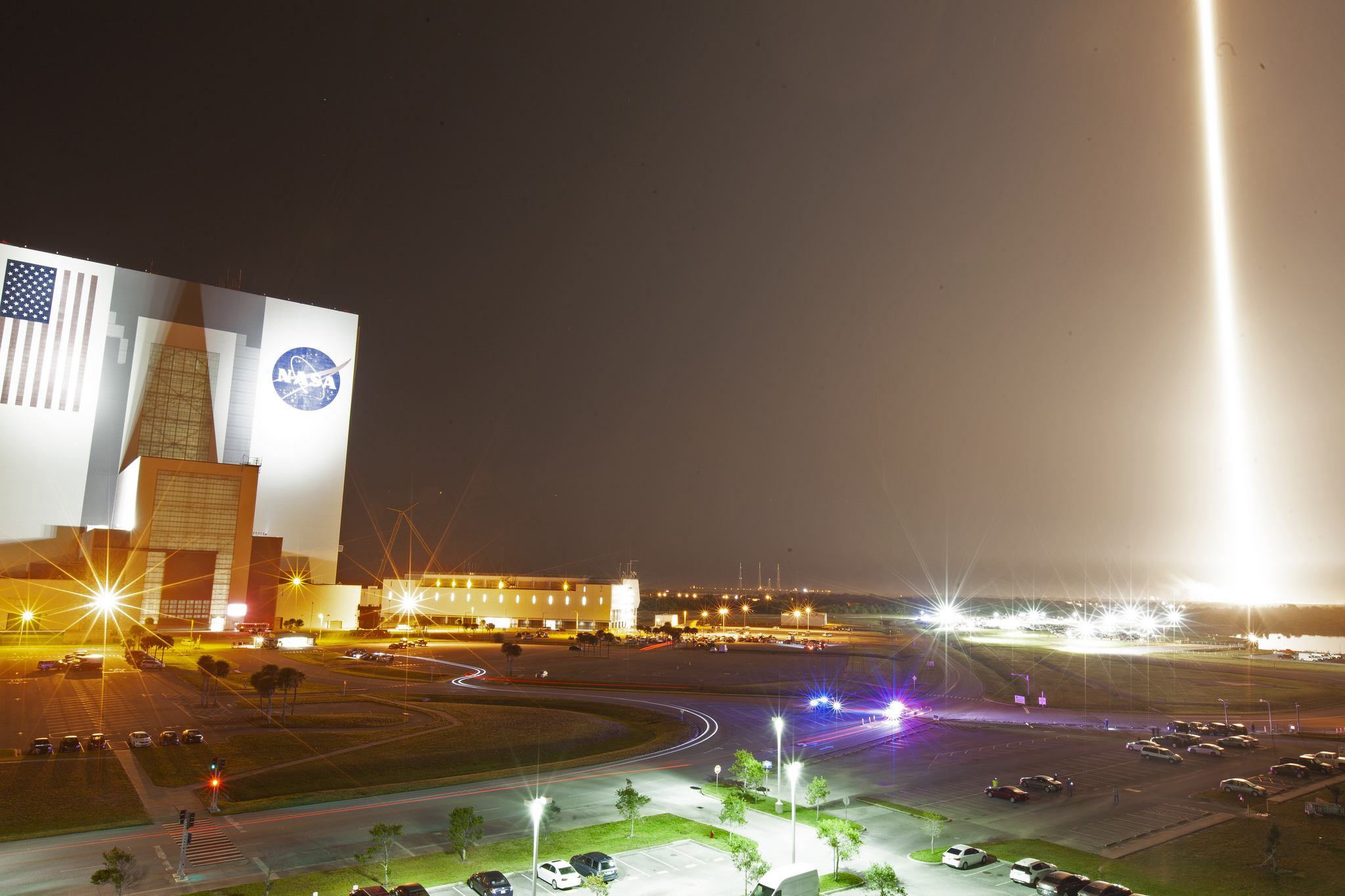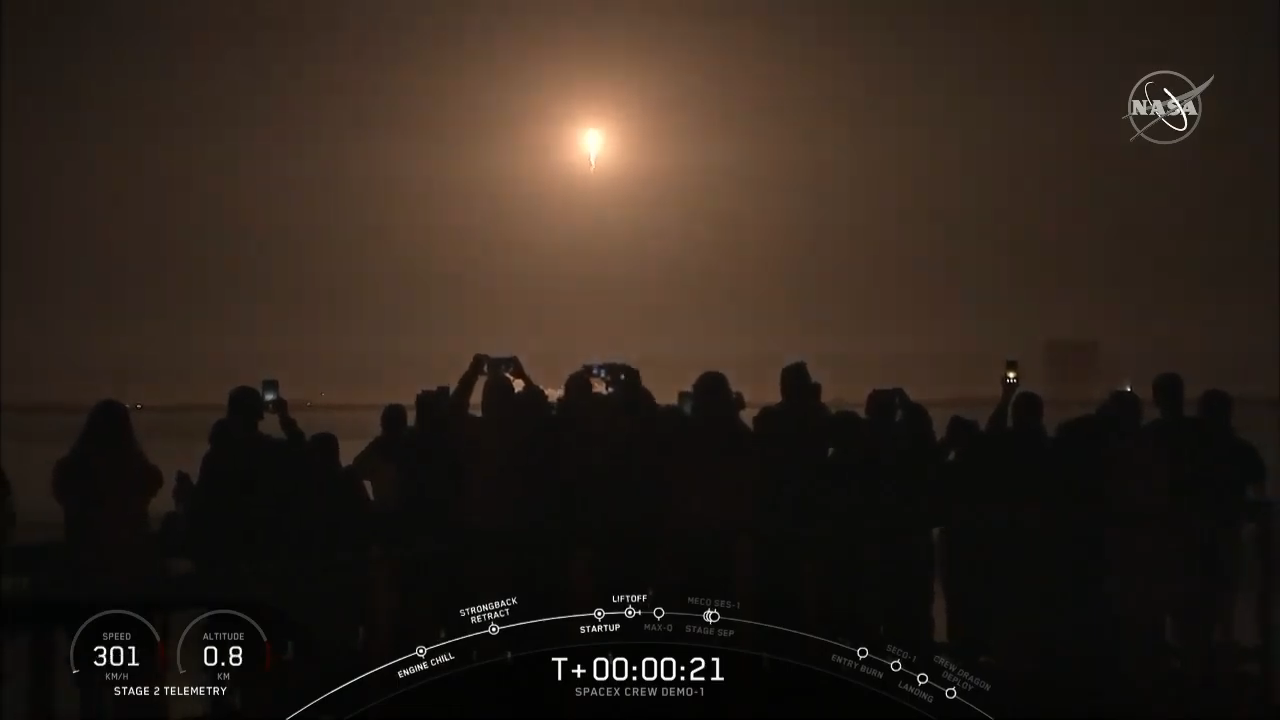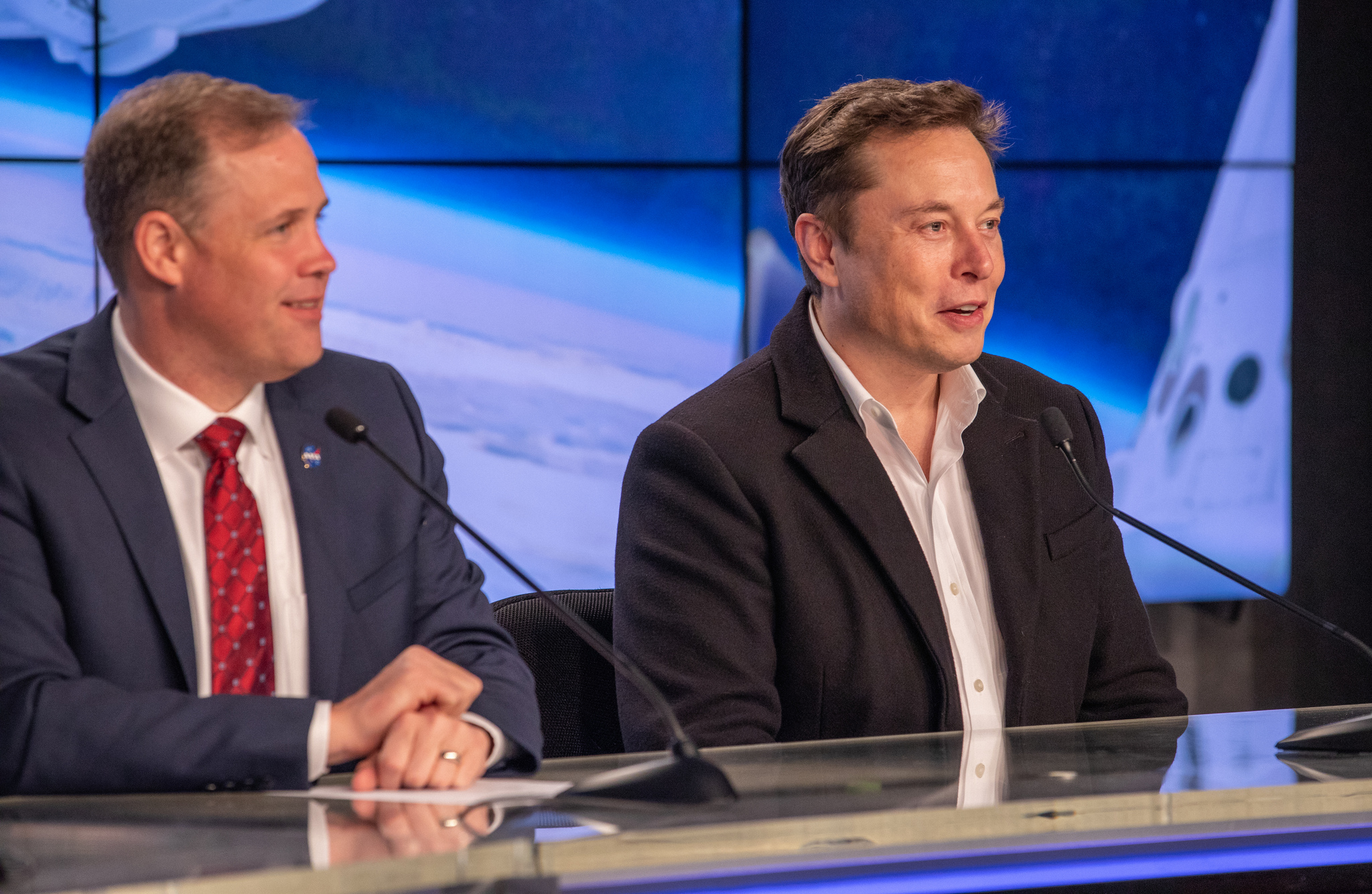Elon Musk Was Emotionally Wrecked by SpaceX's 1st Crew Dragon Launch Success — But In A Good Way
He was "emotionally exhausted" by the launch.
CAPE CANAVERAL, Fla. — It's not often that Elon Musk, the billionaire CEO of SpaceX, gets emotional, but the seemingly flawless launch of Crew Dragon — his company's first spaceship built to fly astronauts — apparently ranks up there.
SpaceX launched its first Crew Dragon on a Falcon 9 rocket in a brilliant predawn liftoff today (March 2), sending the spacecraft to the International Space Station with a dummy astronaut named Ripley, a stuffed Earth toy and a few supplies for the station's three-person crew. The mission, called Demo-1, is SpaceX's big chance to show it can build a crewed spaceship, something Musk has dreamed about since he founded the company in 2002.
"I'm a little emotionally exhausted," Musk said in a post-launch press conference here at the mission's Kennedy Space Center (KSC) launch site. "It's super-stressful, but it worked, so far."
Related: SpaceX Dragon Crew Demo-1 Test Flight: Full Coverage
In fact, Crew Dragon's launch debut appears to be a stunning success. A smooth late-night countdown led to a dazzling liftoff as the Falcon 9 booster lit up the sky over KSC's Launch Complex 39A.
Today's launch is just the start of a SpaceX flight test to show NASA its new Crew Dragon spacecraft is ready to carry astronauts. Musk watched the launch from Firing Room 4 here with astronauts Bob Behnken and Doug Hurley, who will fly on the first crewed Crew Dragon mission as early as July.
"It's been 17 years. We still haven't launched anyone yet, but hopefully we will later this year," Musk said of SpaceX. "So, that will definitely be the culmination of a long dream for a lot of people, me and other people at SpaceX, for sure. Can't wait."
Breaking space news, the latest updates on rocket launches, skywatching events and more!
Related: SpaceX's Crew Dragon Demo-1 Test Flight in Pictures
SpaceX is one of two companies with a NASA contract to fly astronauts to and from the International Space Station. The other company, Boeing, is developing its own CST-100 Starliner spacecraft to launch astronauts using Atlas V rockets. SpaceX and Boeing both plan uncrewed test flights and in-flight abort system tests before flying human crews.
There was a time, Musk said, when he though SpaceX had maybe just a 10 percent chance of ever getting anything into orbit. The company's first three Falcon 1 rockets, a smaller predecessor of its workhorse Falcon 9 fleet, all failed. The fourth, Musk added, was pieced together from remaining parts, but succeeded.
"The whole goal of SpaceX was crewed spaceflight. Improved space exploration technologies," he said. "That's actually the full name of the company, Space Exploration Technologies."




SpaceX has evolved beyond its small Falcon 1 rockets to pioneer reusable rockets and spacecraft for orbital flights. The company has built robotic Dragon cargo ships for NASA, upgraded its Falcon 9 boosters for maximum reusability, launched a Falcon Heavy heavy-lift rocket and is developing a massive spacecraft (its Starship and Super Heavy) for passenger flights to the moon and beyond.
"I really believe in the future of space, and I think it's important that we become a space-faring civilization and get out there among the stars," Musk said. "And I think that's one of the things that, you know, makes people excited about the future. We want the things that are in science fiction novels and movies not to be science fiction forever. We want them to be real one day."
Musk said he was honored SpaceX was able to launch Crew Dragon from Pad 39A, the very same site that NASA's Apollo moon missions lifted off from in the 1960s and 1970s, and where the agency's final space shuttle mission took flight in 2011.
"Thank you for letting us do that," he told NASA Administrator Jim Bridenstine.
"Thank you for refurbishing it," Bridenstine replied. SpaceX upgraded the launch site to handle its missions as part of a lease agreement with NASA.
Still, Musk appeared moved by SpaceX's launch from the historic site.
"I would never have believed that this would ever happen," he said. "I just think, you know, humanity landing on the moon, maybe that was the greatest thing ever. So I can't believe we're launching from that pad."
A long-time advocate of human spaceflight beyond low-Earth orbit, Musk seized the opportunity to repeat his vision of humanity's expansion across the solar system.
"We should have a base on the moon," he said. "Like a permanently occupied human base on the moon, and send people to Mars."
But perhaps the most poignant moment came when a reporter asked Musk if he'd feel comfortable flying on Crew Dragon after witnessing its launch success.
"I'd be happy to go on the vehicle. I think it's a good design," Musk said, with what seemed like pride in his voice. "It was a lot of, a crazy amount of, hard work by a lot of smart people at SpaceX, and a lot of help from NASA."
"I think it's a good vehicle," Musk repeated.
Editor's note: SpaceX's Crew Dragon Demo-1 spacecraft is currently chasing the International Space Station and will arrive at the orbiting lab early Sunday (March 3) for docking trials. You can watch the event live on Space.com.
- Meet Ripley, SpaceX's Dummy Astronaut Riding on Crew Dragon Test Flight
- SpaceX's Crew Dragon Demo-1 Test Flight in Pictures
- Take a Walk Through SpaceX's Crew Dragon Spaceship
Email Tariq Malik at tmalik@space.com or follow him @tariqjmalik. Follow us on Twitter @Spacedotcom and on Facebook.

Tariq is the award-winning Editor-in-Chief of Space.com and joined the team in 2001. He covers human spaceflight, as well as skywatching and entertainment. He became Space.com's Editor-in-Chief in 2019. Before joining Space.com, Tariq was a staff reporter for The Los Angeles Times covering education and city beats in La Habra, Fullerton and Huntington Beach. He's a recipient of the 2022 Harry Kolcum Award for excellence in space reporting and the 2025 Space Pioneer Award from the National Space Society. He is an Eagle Scout and Space Camp alum with journalism degrees from the USC and NYU. You can find Tariq at Space.com and as the co-host to the This Week In Space podcast on the TWiT network. To see his latest project, you can follow Tariq on Twitter @tariqjmalik.

